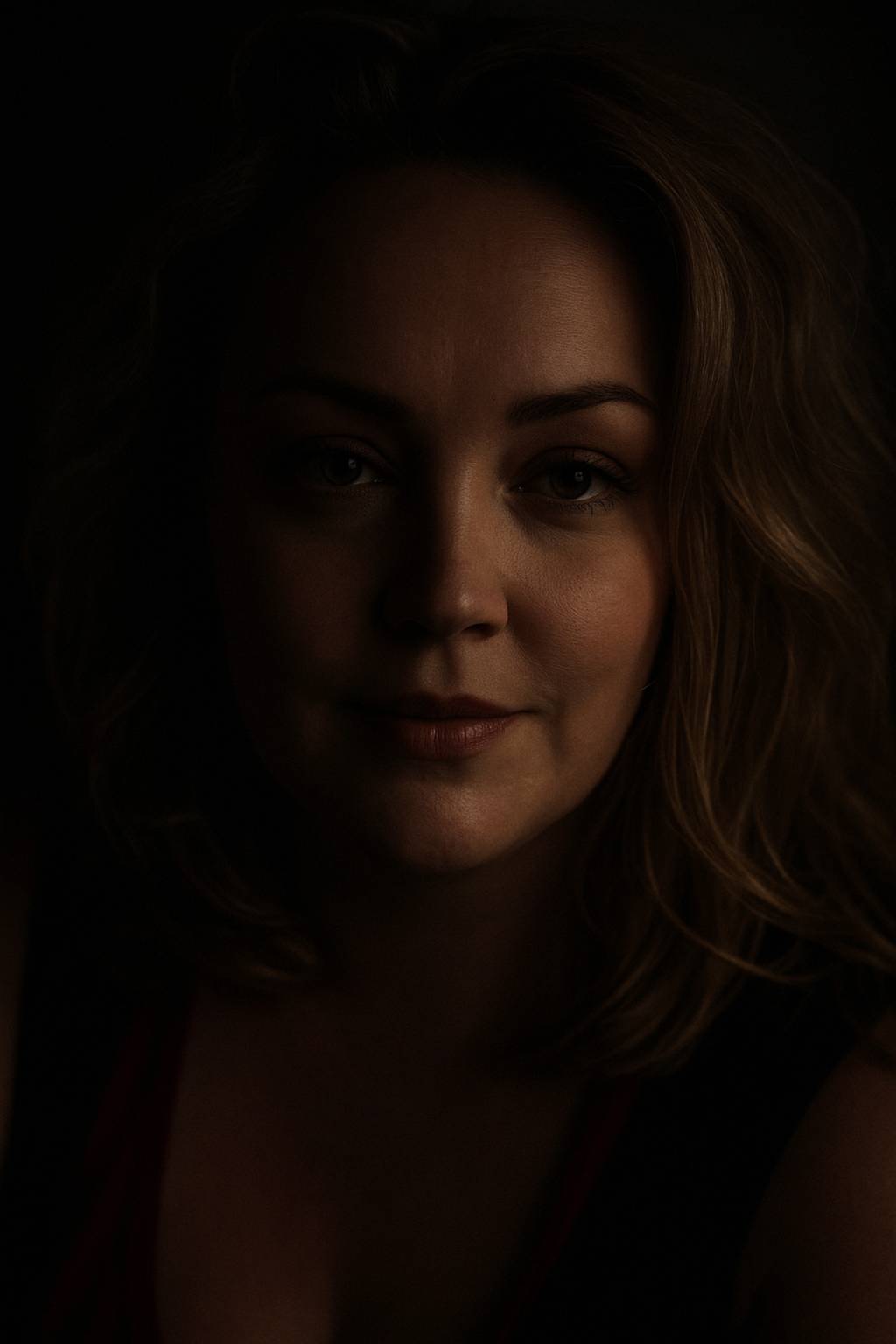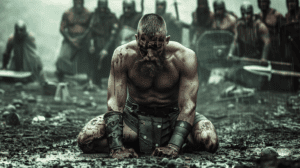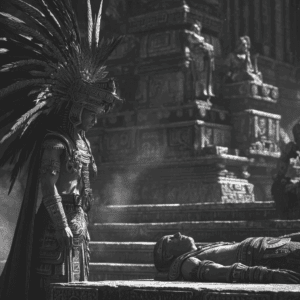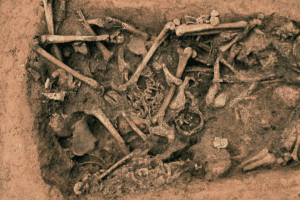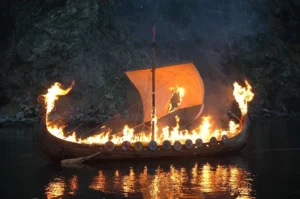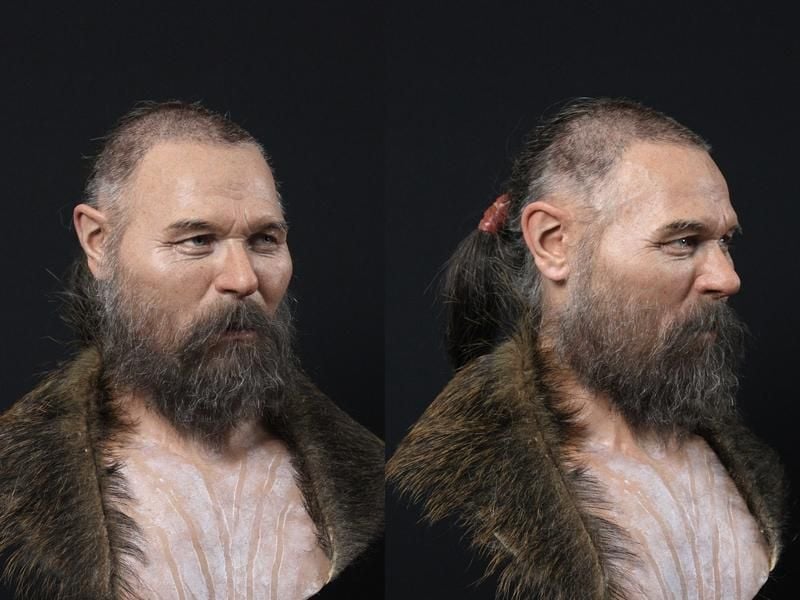
In the suffocating darkness of a Swedish lake, where no sunlight has touched the bottom for eight millennia, wooden stakes pierced through ancient skulls tell a story of violence so brutal it defies explanation. These mounted heads are evidence of ritual from a time long forgotten.
Here, in waters dark as dried blood, an atmosphere as silent as death itself, preserved bone still bears the scars of methodical brutality.
Archaeologists have pieced together the victim’s faces so they emerge from their watery tomb to bear witness to their final, terrifying moments. And terrifying it was. Their silent screams echo through time, trapped forever in this underwater chamber where horror took root and never left.
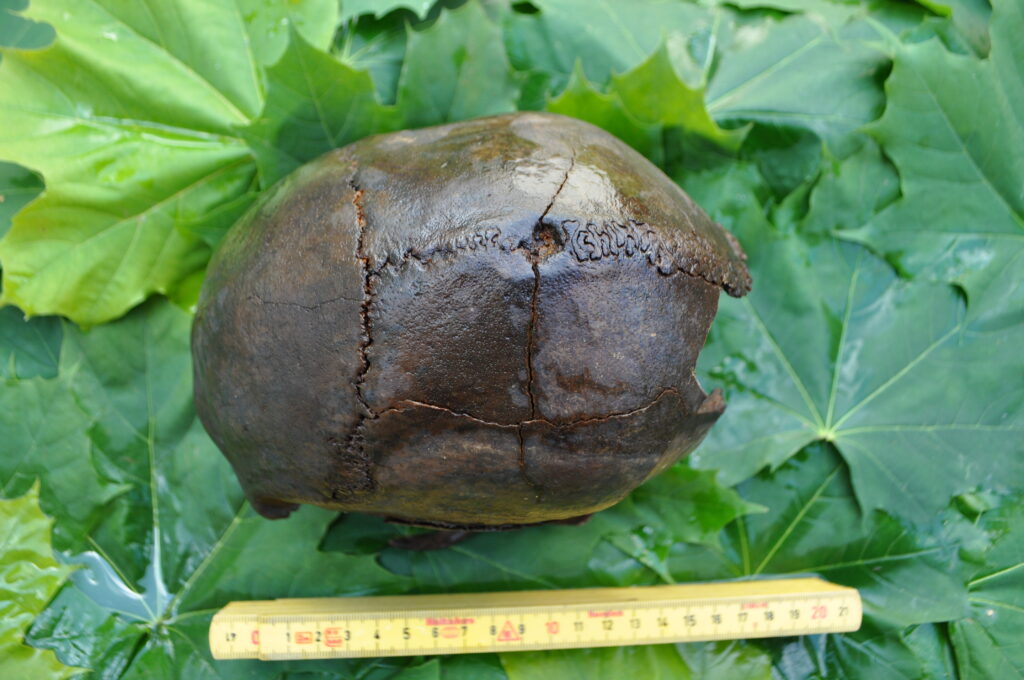
Modern DNA Changes Everything
Each face has been reconstructed using DNA samples obtained by modern laboratories and advanced facial reconstruction methods. In other words, people from eight thousand years ago were brought back to life. The faces were placed over their grimacing skulls to recreate the gruesome scene.
The Mounted Heads Dark Discovery That Changed Everything
When archaeologists drained the prehistoric lakebed at Kanaljorden in 2009 during work to remove a railway, they expected to find pottery shards and stone tools. Instead, they stumbled upon what would become known as the Tomb of Sunken Skulls—a nightmarish tableau that had been hidden beneath dark waters since 6000BC. A time span that we, as humans, can hardly grasp.
Perhaps these people thought they had been forgotten forever. Thankfully, archaeologists would eventually be able to use all their expertise to bring at least their story back to life.
But out of the discoveries, something stood out as being different from the norm. In fact, it was something that had never been discovered in this part of the world before.
What archaeologists found were two wooden stakes nested inside two of the skulls, which appeared to have been mounted on them, creating a ghastly underwater forest of death that challenged everything we thought we knew about Mesolithic Scandinavia.
These skulls were placed on an artificial bed in the lake. Clearly, placing them on a platform that was still submerged below the waterline shows something highly symbolic was going on here, and its secrets would remain hidden for millennia.
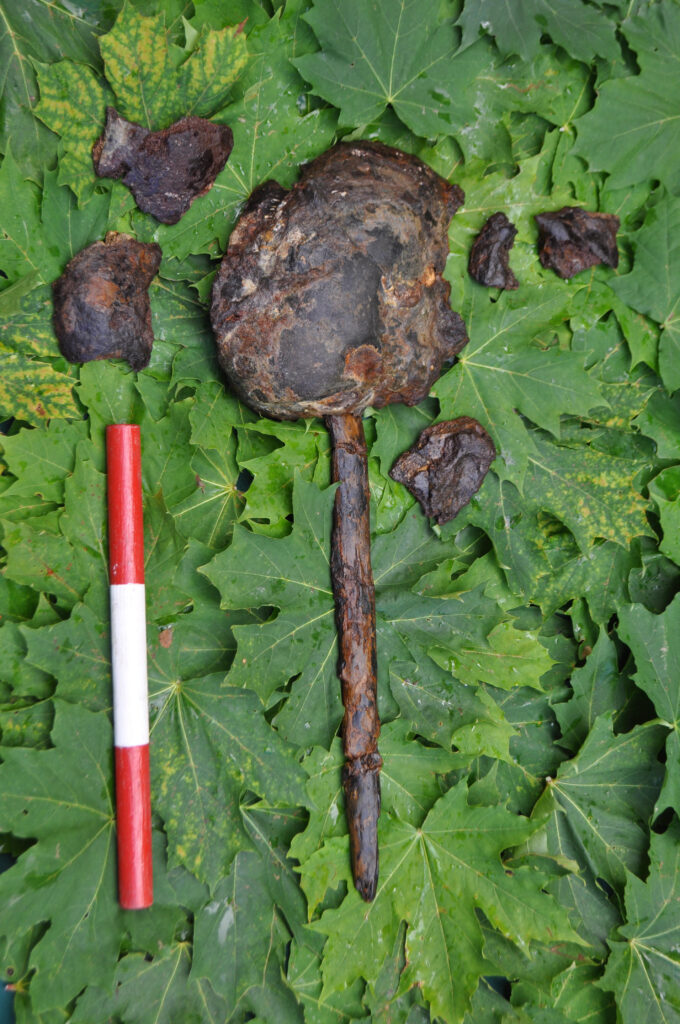
A Gallery of the Dead
Picture this: Eleven human skulls—two female, four male, and five of indeterminate sex—arranged on a submerged stone platform like macabre trophies. But these weren’t just bones. These were the remnants of people who had lived, breathed, and suffered unimaginable violence.
After 8,000 years, well-preserved wooden stakes were found nested inside two of the skulls, with one wooden spike still protruding from a cranium—a chilling reminder that someone, long ago, had methodically impaled these heads for display. Today, most of us would struggle even to comprehend carrying out that act on another human.
The Violence That Preceded Death
The forensic evidence reads like a horror novel. All adult skulls exhibited signs of blunt force trauma before death, with most injuries near the top of the head, above the so-called hat brim line. This wasn’t accidental—the location above the “hat brim line” suggests violence rather than accidental injury.
But the pattern of brutality was disturbingly specific. Female skulls had multiple traumas to the back of their skulls, while males exhibited only a single occurrence of trauma to the top of the skull. The attackers seemed to follow a ritual of violence, targeting men and women differently. Blunt force trauma to the backs of the females’ heads could suggest that they tried to run away before their lives were ended, while just one single blow was enough to incapacitate the men.
The Face of Terror
Through forensic reconstruction, we can now look into the eyes of one victim—a Scandinavian man in his 50s, characterised by prominent cheekbones, blue eyes, and brown hair. Imagine those blue eyes wide with terror as the final blow fell. Imagine his brown hair floating like seaweed around his impaled skull as it sank into the dark lake water. That alone is an eerie site to imagine yourself viewing.

Evidence of Healing—And Survival
Perhaps most disturbing of all: the bones show evidence of healing, which means the blows didn’t kill the victims immediately. These people survived their initial attacks, living with fractured skulls and the knowledge that they had been marked for death. Of course, we have no idea of knowing exactly how long they carried on, or how they felt. But what is clear is that they were brutally attacked before their heads were placed in that cold, dark lake in Sweden.
The Ritual of the Stakes
Some skulls may have been placed in the water after death, suggesting that the site served as a secondary burial ground. Picture the scene: torchlit figures wading into the black water, wooden stakes in hand, methodically mounting decomposed heads like grotesque flowers in an underwater garden.
The preservation was so complete that the brain in one skull didn’t fully decompose, suggesting the individual was placed in water soon after death. The cold, oxygen-starved lake bottom became a time capsule of terror.
Their Horrifying End Was Visible For All To See
However, what makes it even more disturbing is that the facial areas are relatively well-preserved, with delicate bones, such as the nasal bone, still intact on several skulls. This means the fish didn’t feast on them—the heads were quickly placed in the lake bottom, where the cold, dark water protected them from scavengers. And at only a few meters from the former shore on a constructed stone platform, this wasn’t some deep, forgotten grave. This was accessible. Visible.
It’s easy to imagine the living wading into those dark waters, perhaps to tend to their grotesque shrine, or to bear witness to what they had done.
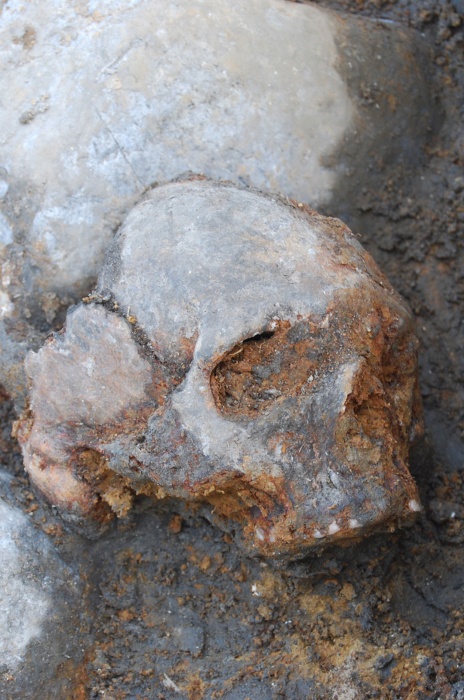
The Animal Witnesses
Around the human skulls, animal bones from at least seven species—boar, bear, badger—were arranged, showing butchering marks but no evidence of fire or cooking. These weren’t meals; they were offerings, creating a menagerie of death that surrounded the human victims like silent witnesses to ancient brutality. The entire site just smells of some dark ritual.
A Mystery Without Answers
Who were these people? Archaeologists have never encountered this grisly phenomenon in Mesolithic Scandinavia before, and they’re hard-pressed to explain it. Were they enemies? Sacrifices? The victims of some religious ritual we can’t comprehend?
A nearly complete infant skeleton suggests the individual had been stillborn or died shortly after birth—even the innocent weren’t spared from this underwater tomb. This was clearly a special place for the Mesolithic people, who hunted and gathered in this area. Remember, these people would have been nomadic and moved around, but placing these heads in this location would have perhaps given them some reason to keep coming back to this spot.
The Horror of Not Knowing
Perhaps the most terrifying aspect of the Tomb of Sunken Skulls isn’t what we know—it’s what we don’t. Eight thousand years of silence have swallowed the screams, the reasons, the rituals that led to this underwater charnel house.
We can reconstruct their final moments, map their injuries, even look into their reconstructed faces—but we cannot answer the question that haunts every observer: Why?
This isn’t random violence. The methodical nature of the injuries, the careful mounting on stakes, the ceremonial placement—someone had a reason. Someone believed these people deserved this fate. Someone thought this display was the right thing to do. The fact that we cannot justify such brutality makes it infinitely more disturbing than any explanation could. Was this a warning to others?
The Horror That Endures
Eight millennia later, the Tomb of Sunken Skulls stands as a testament to humanity’s capacity for ritualised violence. In those dark waters, wooden stakes still pierce ancient bone, and if you listen closely to the wind across the Swedish landscape, you might almost hear the whisper of something that should have stayed buried.
The skulls have been raised from their watery grave, but their secrets remain as dark and impenetrable as the lake that once concealed them. Some mysteries are meant to terrify us—reminders that even in our most ancient past, humans were capable of horrors that defy understanding.
What drove our ancestors to this underwater ritual of death? The skulls cannot tell us—but their silent screams echo across millennia, a chilling reminder that some questions are more terrifying than their answers.
Will We Ever Know?
Advanced DNA analysis and isotope testing may yet unlock the secrets of Kanaljorden. As genomic research reveals the movements and connections of Mesolithic Scandinavians, and 3D trauma analysis provides new insights into ancient violence, this unprecedented discovery remains under active investigation.
Within the next decade, we may finally learn whether these victims were family, strangers, or sacrificial offerings—and perhaps discover if this horror was unique, or part of a dark ritual practised across ancient Scandinavia. Until then, the skulls keep their terrible silence. So this crime scene is definitely one to keep an eye on.
The Horror We Recognise
Before we dismiss this as ancient barbarism, consider this: human societies today remain capable of ritualised violence, public displays of victims, and systematic dehumanisation. The methodical nature of the Kanaljorden killings—different injury patterns for men and women, careful mounting on stakes, ceremonial placement—mirrors the calculated cruelty we’ve witnessed in modern genocides and terror campaigns.
Eight thousand years separate us from those Swedish lake waters, yet the capacity for organised brutality remains unchanged. What protects us isn’t evolution—it’s the fragile institutions and moral frameworks we choose to maintain. The skulls remind us that civilisation is not humanity’s natural state, but a constant choice we must make, again and again.
